Fossil Rim Wildlife Center opened to the public on June 21, 1984, but Fossil Rim history even stretches back another decade.
As we celebrate 35 years of men, women, children, families, and friends being able to travel to Glen Rose and learn about the wonders of conservation, let’s delve into the origin story of Fossil Rim and explore its evolution.
Discovery
Fort Worth businessman Tom Mantzel was riding high with success in the oil industry and decided to find the perfect rural destination for his weekend pursuits. How did he set his sights on Fossil Rim?
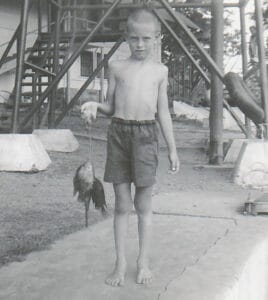
“The Hill Country was part of my formative years, as I grew up on the edge of Northwest Austin, where it becomes very hilly to the west,” Mantzel said. “I just love that landscape, but the drive from Fort Worth was too far for me to take every weekend. One Friday night, I saw a newspaper ad that read ‘Rough, Rustic, Beautiful. Glen Rose, Texas. For sale, 420 acres.’ I knew Glen Rose was a pretty area, so I called the number with the ad every 15 minutes that night until the owner finally got home at 11:30 p.m.
“He was surprised at my sense of urgency, but he agreed to meet me in South Fort Worth on Saturday morning to bring me out to see the property. I assured him that if I liked it, I would buy the place.”
They would enter what is now the entrance to The Lodge via County Road 2010. At the time, the land was called “Waterfall Ranch”.
“As soon as we pulled in the gate, I knew I was going to buy it,” Mantzel said. “I saw that beautiful panoramic view.”
The owner of the 420 acres was Dan Carnegie, who owned the Whataburger restaurants in Arlington at the time.
“His wife made him choose between the ranch and Whataburger,” Mantzel said. “I got a $50,000 down payment of the $250,000 to the realtor on Monday morning when my bank opened.”
Seller’s remorse struck a week later.
“Dan tried to buy it back, but I wasn’t interested,” Mantzel said. “He tried to buy it every six months until he passed away. Dan was a great guy; I gave the eulogy at his funeral.”
When they met, Carnegie made a confident prediction.
“I was an avid hunter at the time I decided to buy Waterfall Ranch,” Mantzel said. “Dan said he was sure I’d change my mind about that within a week. I thought that was silly, especially since we’d just met. But, within a week, I lost my desire to kill animals.”
Right-hand Man
Mantzel bought Waterfall Ranch in late 1973. He soon met one of his neighbors on one of the fence lines while riding around in his Jeep. That neighbor’s name was Bill Hankins.
“We hit it off and, within 30 days of the purchase, Bill was my ranch foreman,” Mantzel said. “He was one of the smartest men I ever met and an outstanding problem solver. Bill would always do what I wanted him to do, but he usually had a suggestion to do it better and more efficiently. After a few of his suggestions, I told him that we were going to do it his way from now on.”
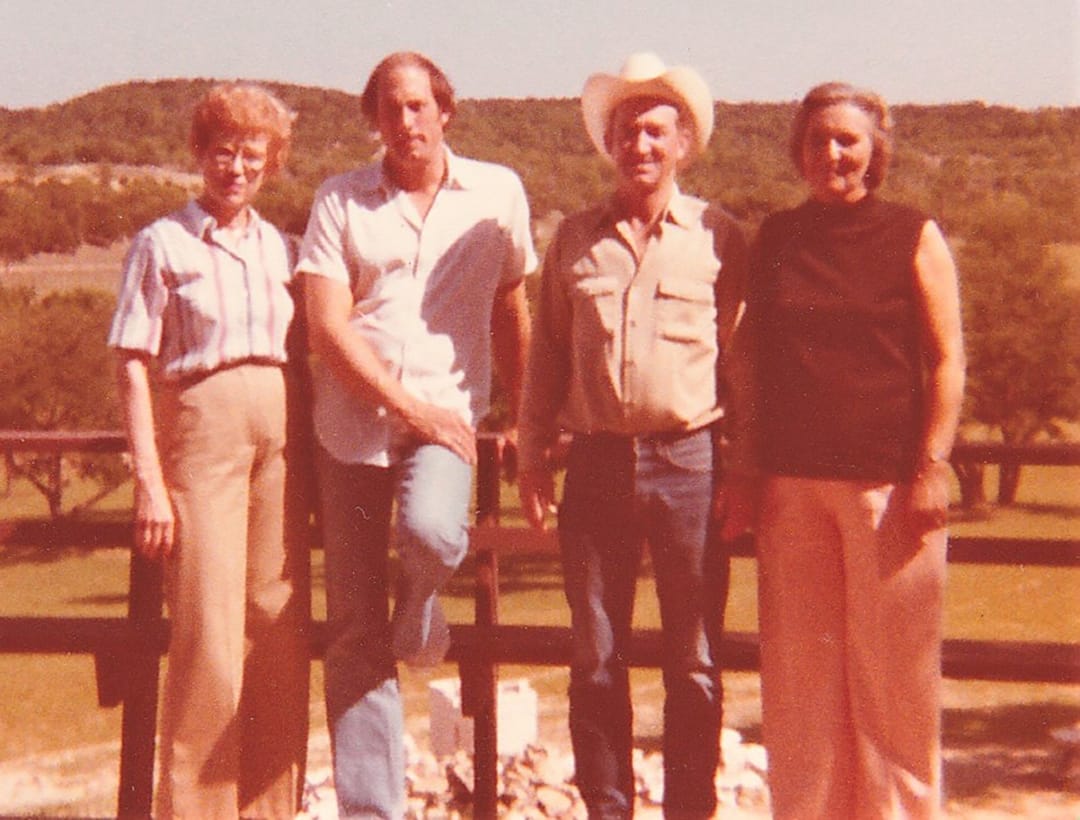
Mantzel shared an anecdote of his confidence in Hankins.
“One time, we headed to the Hill Country to buy a sable (antelope),” Mantzel said. “The sable was darted and ran to the top of a hill that was chock-full of cedars before it collapsed. The foreman of the ranch we were on said there was no way we could get our truck and trailer up there to load it. I asked Bill if he could get the trailer to the sable, and after taking a closer look, he said he could.
“I knew better than to question Bill. The ranch foreman argued with me for a few minutes that it couldn’t be done, but I got him to let Bill try. Bill backed the trailer up with precision right next to the sable’s nose.
“We loaded it and were headed home a few minutes later; Bill did stuff like that all the time. Bill was my foreman until he died in December 1984 from lung cancer. He was like a family member.”
After discussing significant changes to Fossil Rim through the decades, Mantzel pointed out a Hankins-related project that remarkably had not changed: the Fossil Rim fencing along County Road 2010 that was built in the mid-1960s when it was Carnegie’s fence line.
“Regarding that original 420 acres, I think of the durability of the perimeter fencing,” he said. “Bill Hankins built it to stay.”
Building The Collection
Whenever any adjacent land became available and Mantzel was aware of it, he would make an attempt to buy it. Fifty acres here, 100 acres there – it was a series of additions over time.
Hankins actually sold Mantzel all of his land, except for a few acres around his house. A decade after he bought Waterfall Ranch, Mantzel had added about 1,000 acres. He also changed the name to “Fossil Rim Wildlife Ranch” in 1984.
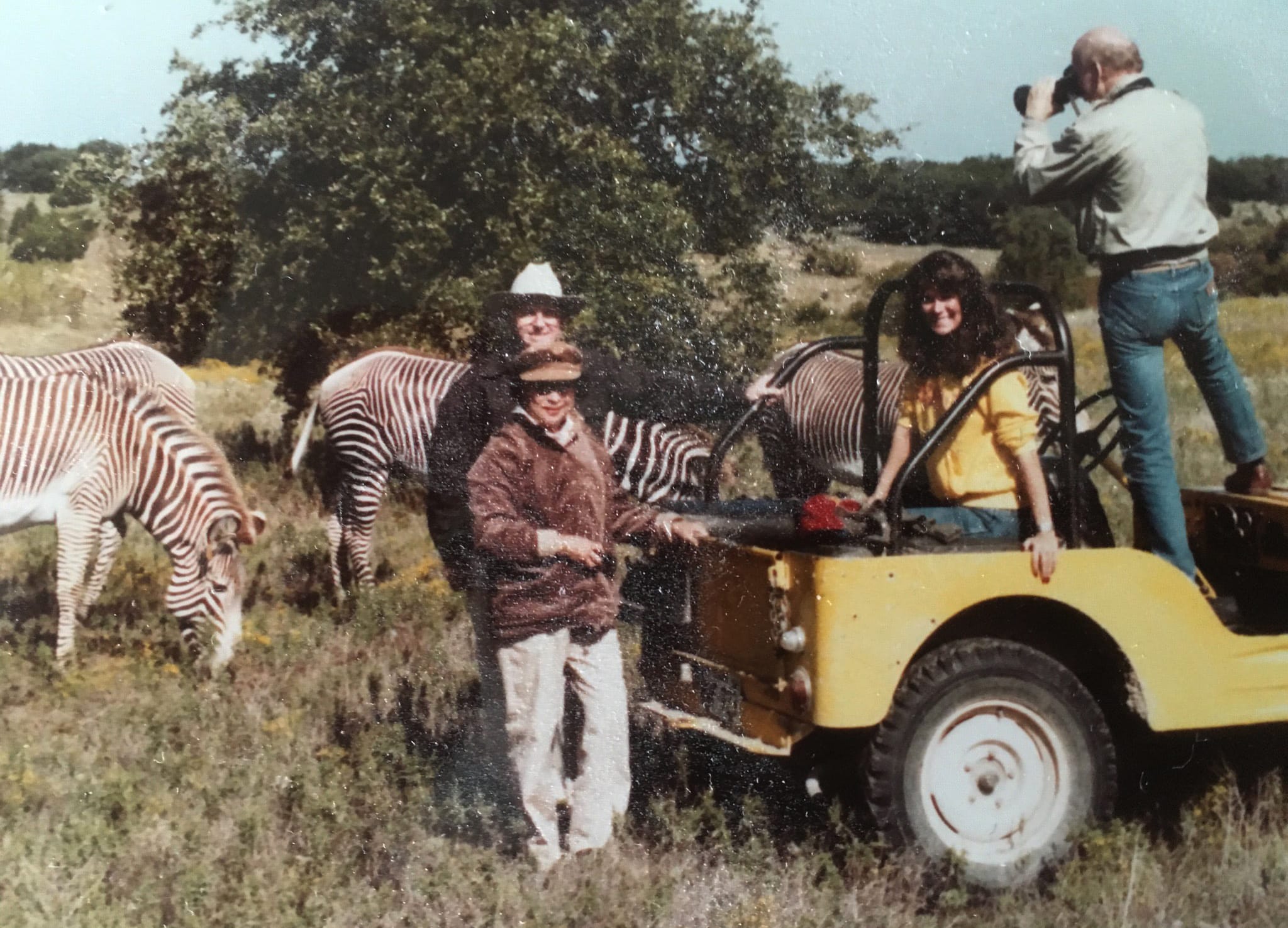
What about the accumulation of what is now more than 1,100 animals? It all started with a small book.
“I loved the book ‘Larger Mammals of Africa’ by Jean Dorst and Pierre Dandelot; it was my favorite for years,” Mantzel said. “That field guide was packed with information, and I would fantasize about the different species I wanted. In 1973, I met a guy who lived south of Waco named Leon Leopard – I’m not kidding – who was an animal trader. Most of the animals were $5,000-7,000 a pair.
“I did a lot of studying to see which animals were well-suited to live here, plus those I personally considered appealing. The demand was high for exotic animals, but I made a list and began adding to my collection.”
Gemsbok were the first exotic species Mantzel brought to Fossil Rim.
“Waterbuck, sable, and addax were also very early on,” he said. “I typically bought them in pairs. I fell in love with the sable, and my goal was to have the largest sable herd in the United States. Addax were a great example of early breeding success at Fossil Rim.”
In 1982, Grevy’s zebras arrived, as Mantzel was now making a concerted effort to propagate endangered species. In 1984, two southern black rhinos arrived. Grant’s zebras, ostriches, and giraffes also debuted in 1984.
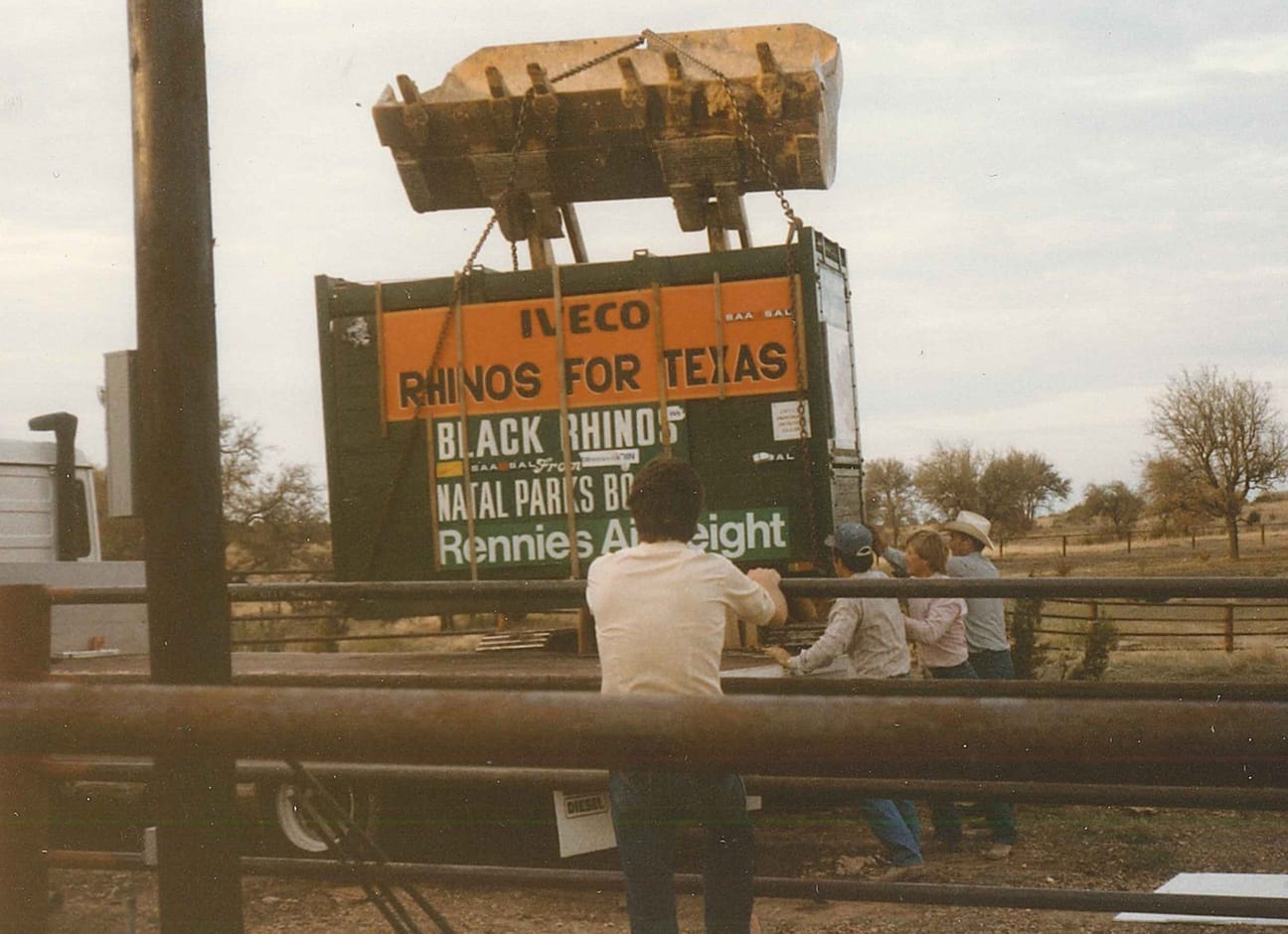

“ABC’s Good Morning America visited in 1984 to film the rhinos’ arrival,” Mantzel said. “They had me lead into an episode of the show. After a commercial, they cut to me saying ‘Good morning America, my name is Tom Mantzel from Glen Rose, Texas.’”
In 1985, scimitar-horned oryx and cheetahs arrived. Mantzel recalled how excited he was to receive his first eight cheetahs from South Africa and the drive from the airport in Houston back to Fossil Rim.
“I spent two years arguing with folks at the AZA (Association of Zoos & Aquariums) about cheetahs,” he said. “They insinuated that cheetahs would be too difficult to breed. They kept trying to steer me toward lions.

“Soon after the first eight cheetahs, I added four more. We had Fossil Rim’s first and second litters within a year (in 1986). It’s difficult to express the pride I felt about that.”
It probably was not a coincidence that, in 1986, Fossil Rim became the first-ever “nontraditional zoo” to be accredited by the AZA. At that point, the AZA was known as the AAZPA – American Association of Zoological Parks and Aquariums. Fossil Rim has continued to meet AZA accreditation requirements every five years since then.
“The director of the Fort Worth Zoo at the time called me and said I had no idea what an accomplishment (AZA accreditation) was,” Mantzel said. “He said that so many zoos looked down their noses at ranches, but Fossil Rim had earned respect for its breeding success. Three officials from various zoos came down to evaluate us, and for years this was the only ranch in the AZA. Once I understood what an achievement it was, I was very proud of that.”
Time To Go Public
A big part of the decision to open Fossil Rim to the public in 1984 was financial.
“In the mid-80s, the Texas oil industry was a basket case,” Mantzel said. “Oil went from $40 a barrel to $8, and a lot of industries cratered. I was one of many casualties. I sold nearly all my assets to keep my nose above water.
“My lawyer and CPA both told me to sell the ranch, but I refused. Opening to the public for tourism was the only other option.”
Mantzel said that, in the early days, people would hear “Fossil Rim” and think it was in reference to a fossil exhibit. But, momentum began to build and exposure grew.
“Word gradually began to spread (in the early 80s), and I’d be taking a nap on the sofa on a weekend afternoon when I’d get a knock at the door,” he said. “It would be one of my buddies and his family stopping by to ‘say hello’, but what they really wanted was a tour. We’d all hop in the pickup and I’d drive them around for a couple of hours. When I’d get back, another friend from Fort Worth would have shown up with his family.”

As it turns out, a private schoolteacher may have ignited the tourism flame.
“One day, a teacher from Fort Worth Country Day School happened to be with one of the groups who knocked on my door,” Mantzel said. “After I took them around, she asked if I’d ever consider hosting a field trip of schoolkids. I said we could try it, and the next day she called to set the date. She showed up with about 20 students.
“Within a week of them visiting, word had spread and I was getting heavy requests for tours. I could see the momentum to go public. I soon hired an education director and we operated out of what is currently the administration building.”
As opposed to the current Admission Center, early visitors paid admission through their vehicle window when they pulled up to a building that was only 64 square feet.
The staff was very small back in 1984, although it did include Bruce Williams and Kelley Snodgrass, former director of conservation and current executive director, respectively. Mantzel emphasized how crucial volunteers were, as the visitor traffic picked up.
“Then and now, those docents made all the difference,” he said. “Look no further than Judy (Oetting since 1983) and Trich (Zaitoon since 1984). Fossil Rim as it is today is nonexistent without their contributions. My mom, Lois, would make a great homemade dessert in Austin that she would bring up each weekend; it was all hands on deck.”
Going Through Changes
Even with tourism taking off, Mantzel’s losses in the oil industry and the high maintenance costs of the ranch revealed a path of unsustainability for the businessman. In January 1987, he began to search for someone to help keep Fossil Rim afloat.
As it turned out, Jim Jackson and Krystyna Jurzykowski were looking to start an ecology center on the island of Martinique. When they were seeking advice from animal propagation experts, Mantzel got wind of their inquiries. They first spoke on the phone in January, and then the couple visited Fossil Rim in March.
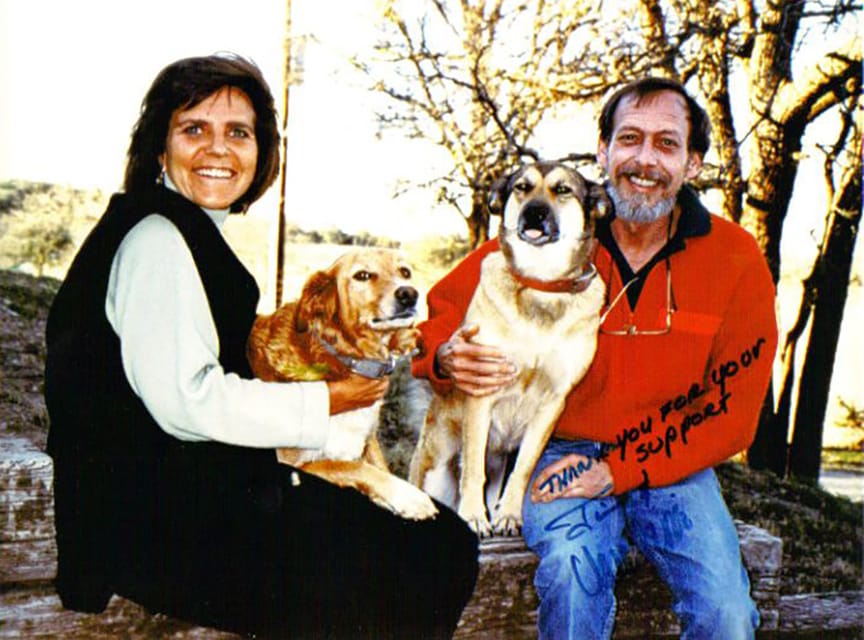
“We initially invested money in Fossil Rim only as an exchange for Tom’s advice that would be, in time, focused on developing our plans in Martinique,” Jurzykowski said. “As it turned out, we became the legal owners to save the ranch from bankruptcy creditors. Those circumstances understandably led to Jim and me moving here in February 1988.”
The couple made the ultimate commitment to save Fossil Rim and became the new owners in the spring of 1987. Fossil Rim Wildlife Ranch became Fossil Rim Wildlife Center on May 7, 1987.
Jurzykowski discussed the Fossil Rim she discovered when she visited in 1987.
“I’d estimate 98 percent of what you see now is either a new addition, fully renovated, or at least improved,” she said. “The Overlook area consisted of the café – hamburgers and hot dogs at that time – and a souvenir stand. The front ticketed entry was a little wooden building. There were three full-time animal care employees – Bruce, Kelley, Rodney (Marsh) – plus Arnulfo (Muro).
“Judy Shelton was Tom’s administrative assistant and handled accounting, plus there were a few gate and Overlook staff. Kevin Tansky was education coordinator, and there were dedicated volunteers in the education department.”
She said there were about 400 animals at that time.
“What is now the accounting department (in the administration building), was a room used for meetings with one landline phone and a couch, where everyone would discuss what needed to be done that day,” Jurzykowski said. “What is now the animal care department (in the administration building) was a separated garage where the animal feed was kept.”
In 2000, Jurzykowski transferred daily operations to “Earth Promise”, an independent Texas registered nonprofit 501(c)3 corporation. Severe financial difficulties arose again during 2002-05, but Fossil Rim persevered.
In 2008, she donated the land and infrastructure to Earth Promise. In 2015, the company name changed from “Earth Promise dba Fossil Rim Wildlife Center” to “Fossil Rim Wildlife Center, Inc.”
On a similar note, Mantzel talked about Fossil Rim back in the mid-80s, as well as how some things have changed.
“We built the sheds to shield animals from the north wind, built the early Overlook facilities, drilled two wells, and built what is now The Lodge after my first house burnt down,” he said. “We built cheetah facilities in 1985, but thanks to the generosity of the Haas family, the facilities are much more impressive now as the Robert B. Haas Family Cheetah Conservancy.”
While The Lodge was being built, Mantzel lived in what is now the administration building. There is now a second administration building connected to the original one by a walkway.
Appreciating The Journey
Snodgrass arrived at Fossil Rim in 1984 and has seen the wildlife center change and grow. He has served a variety of roles in Fossil Rim’s breeding and management programs, most recently as executive director for the past year.
“The 35th anniversary is truly a moment worthy of celebration by the Fossil Rim Wildlife Center community as a whole – past and present,” he said. “Previous owners with vision and courage, staff, volunteers, our guests, supporters and donors, members, the Board of Directors, and the many alliances have all contributed to Fossil Rim’s creation, evolution, and – most importantly – our deepening and sustained mission focus.”

Believe it or not, it seems to Snodgrass like these 35 years have passed by quickly.
“It’s amazing to think about all of the work done here during that time,” he said. “Conserving land, helping to ensure the very existence of certain wildlife species, and providing opportunity for many to experience and enjoy this place have been at the forefront. Teaching appreciation for these animals and hopefully inspiring people to be ever-better stewards of nature are crucial, because we are dependent upon the natural world for our health, well-being and existence. Fossil Rim has accomplished so much over the past 35 years for the mission.
“That purposeful work has been – and continues to be – possible thanks to so many who have invested themselves into our common goals. Looking forward, all the accomplishments to date will be built upon by the potential realized during the next 35 years, as Fossil Rim faces the challenges and opportunities ahead.”
It Takes A Village
Mantzel never could have imagined what he was fostering when he committed funds to those 420 acres in 1973. But, in retrospect, he appreciates everyone who lent a hand in the years that followed.
Look no further than in 1987 when he was having to come up with significant bank payments, one after another, just to keep Fossil Rim’s gates open to guests. When Jurzykowski and Jackson came to fully grasp the predicament Mantzel – and the wildlife facility as an entity – were in, they made one of the most important decisions in Fossil Rim history.
“Who would agree to send a guy you’ve never met $25,000 on the basis of a two-hour phone conversation when you live halfway around the world?” Mantzel said. “In the real world, that’s not supposed to happen, but Krystyna and Jim stepped forward and saved Fossil Rim. It was destiny that Fossil Rim become what it is today. I feel blessed to be a part of it.”
Mantzel recalled a memorable moment from an interview he did decades ago that encapsulated his feelings on the group effort.
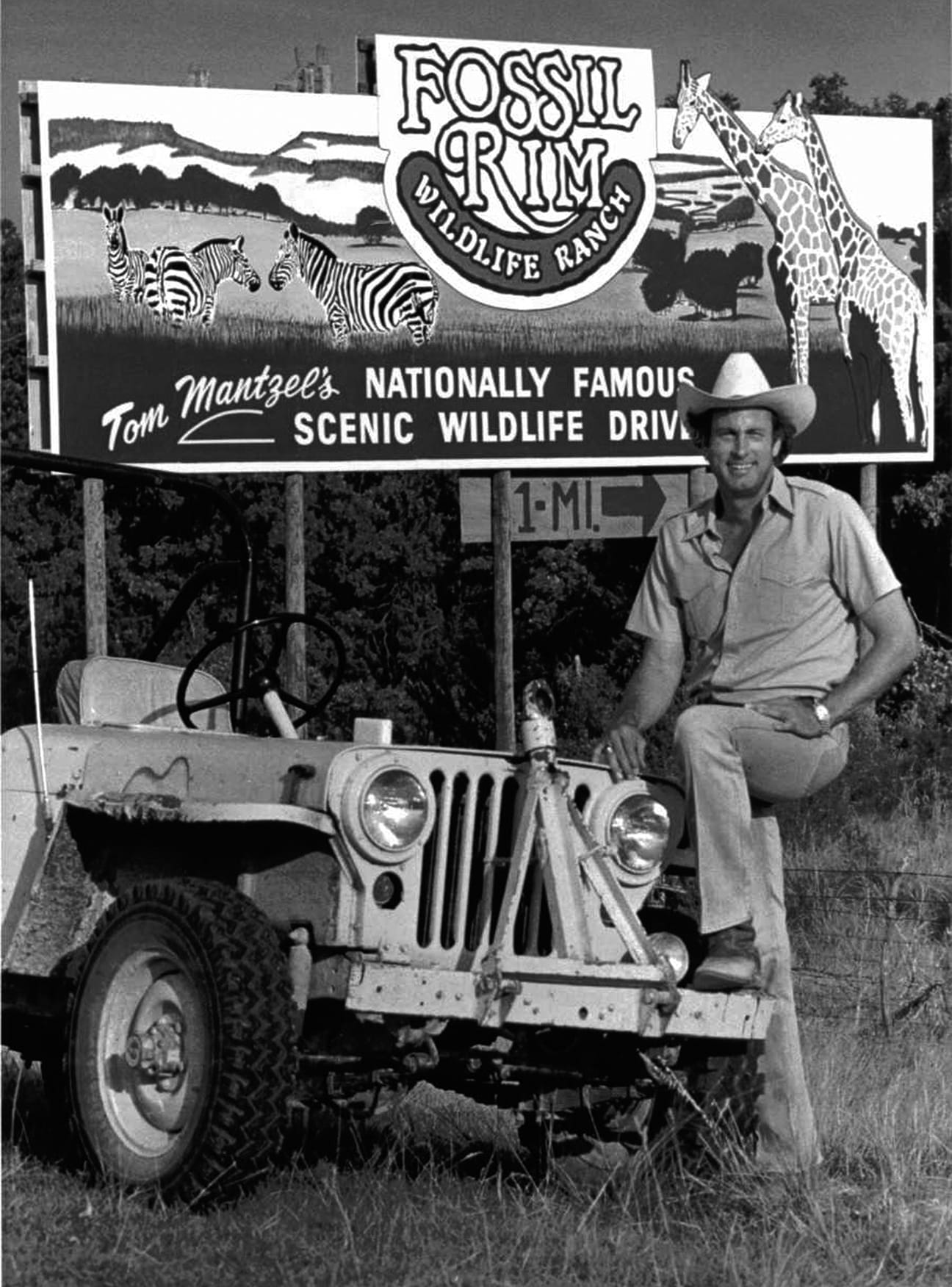
“I remember when Fossil Rim took off in 1984-85 and I was on all the national TV shows and magazine covers, doing interviews,” he said. “A freelance writer from Connecticut followed me around for three days for a major magazine article in 1985. During dinner, he asked me ‘What’s it like to own Fossil Rim?’ I said ‘I don’t own it.’
“He didn’t understand, and thought there had been some mistake with his assignment. I explained that I’m just a temporary steward. One hundred years from now, somebody else will be the steward.
“That is the perspective that I take. It was painful when the oil industry cratered and took me with it, but it’s like a dad with a daughter who is getting married. Does she quit loving her dad? No.
“The relationship may change, but there is still love. Krystyna, Jim, and I may be associated with Fossil Rim in a different capacity now, but our fingerprints are still on its legacy. Everybody puts their fingerprint on it – from Kelley to the docents – everyone is a part of this place, in one form or another.”
-Tye Chandler, Marketing Associate


Thanks, Tye, for this article. Having lived in Somervell County my whole life, I remember Tom and the beginning of Fossil Rim.
Awesome, I’m glad you enjoyed it. 🙂
Love the article. Tku.